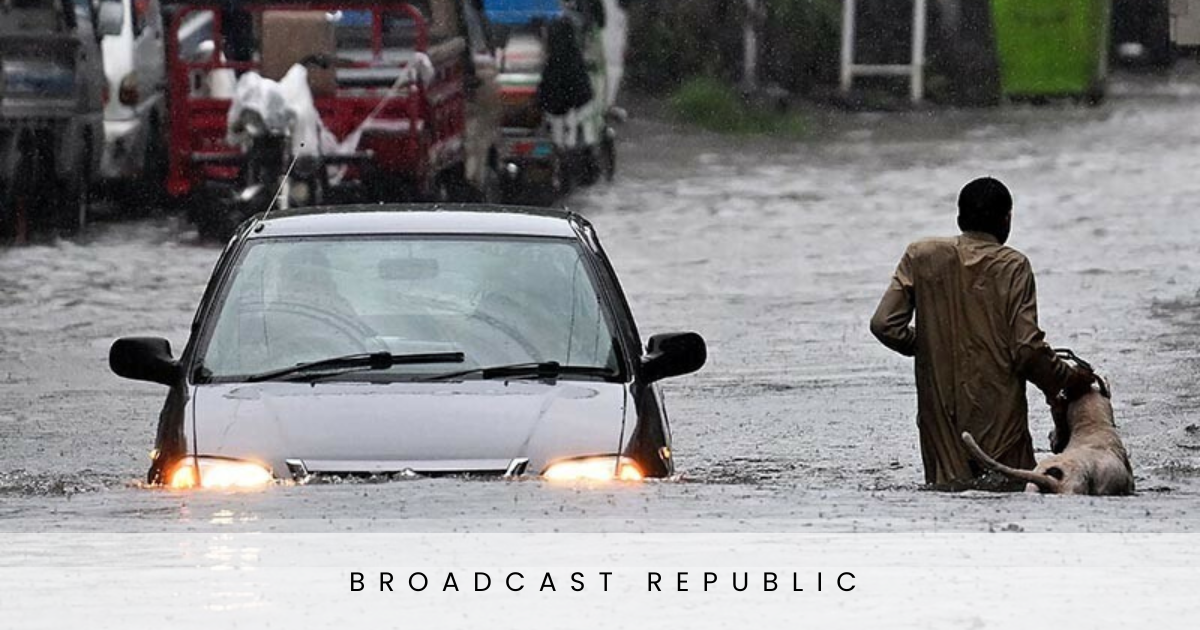Monsoon floods in Pakistan 2025 is once again facing the devastating impact of heavy monsoon rains. In July 2025, intense rainfall caused severe monsoon floods across Punjab, Islamabad, and parts of Khyber Pakhtunkhwa, leading to the tragic deaths of over 178 people as of mid-July. The situation remains critical, with urban flooding, landslides, collapsed buildings, and displaced communities.
This natural disaster has not only exposed the fragility of Pakistan’s infrastructure but also raised urgent questions about climate change, poor drainage systems, and disaster preparedness.
How Bad Is It?
According to the National Disaster Management Authority (NDMA), over 170 deaths have occurred since June 26, 2025, mostly due to building collapses, electrocution, and drowning. The most affected areas include:
- Lahore: Entire neighborhoods flooded; traffic at a standstill; roads turned into rivers
- Rawalpindi & Islamabad: Overflowing Nullahs and blocked drainage led to knee-deep water in markets and homes
- Southern Punjab: Villages submerged, crops destroyed, livestock washed away
- Khyber Pakhtunkhwa (Swat, Chitral): Landslides and road blockages cut off remote areas
The Met Office has warned of further rainfall in the coming days, with alerts issued for flash floods and hill torrents in Balochistan and Gilgit-Baltistan.
What Caused the Monsoon Floods in Pakistan in 2025?
Several factors contributed to this disaster:
- Excessive Monsoon Rains: Rainfall has been 30% higher than average this season
- Urban Development Without Planning: Cities like Lahore and Karachi lack proper drainage systems, especially in informal settlements
- Encroachment on Water Channels: Rivers, Nullahs, and storm drains are illegally occupied, restricting natural flow
- Climate Change: Warmer temperatures increase the intensity and unpredictability of rainfall
Environmentalists have long warned that Pakistan is one of the top 10 countries most vulnerable to climate change, and disasters like this prove the threat is real.
Relief & Rescue Efforts
The Pakistani Army, Rescue 1122, and local authorities are working on relief operations. Boats and helicopters have been deployed to rescue trapped families. Camps are being set up for displaced people, especially in Layyah, Mianwali, and DG Khan.
However, many citizens are complaining about:
- Slow government response
- Lack of clean drinking water and food in camps
- Unreliable electricity and internet in flood-hit zones
Volunteers and NGOs are stepping in to distribute supplies, but the scale of the disaster demands a national-level emergency plan.
What Needs to Change?
Pakistan faces similar flooding almost every year, yet little changes. Experts suggest:
- Investment in flood-resistant infrastructure (raised roads, underground drains, water channels)
- Regular cleaning of storm drains and Nullahs before the monsoon season
- Stricter regulation on illegal construction near water bodies
- National climate action policies to prepare for future extreme weather events
Final Thoughts
The monsoon floods in Pakistan in 2025 are a reminder that nature cannot be ignored. Urban expansion without planning, lack of climate policies, and weak governance have worsened this disaster. The loss of lives and destruction of homes is not just a natural tragedy; it is a result of years of inaction.



